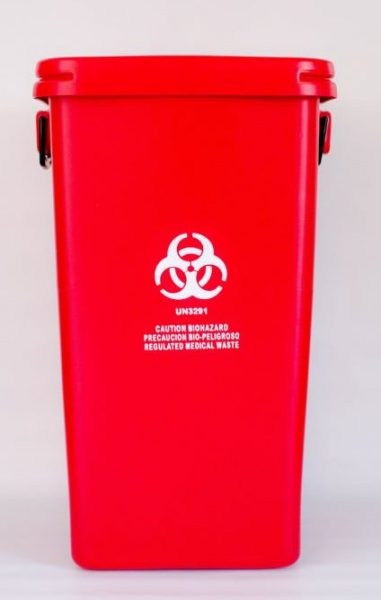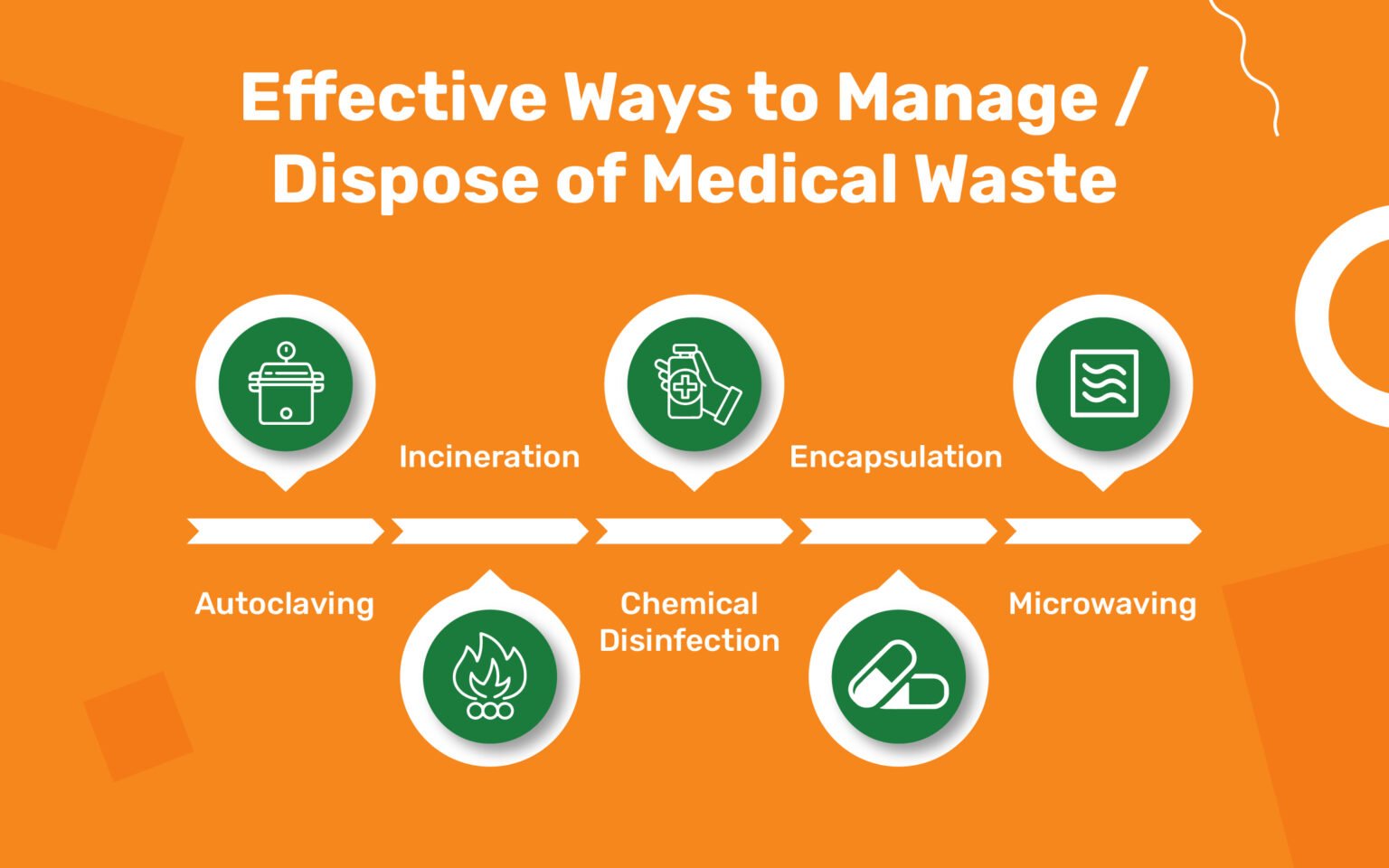Your Relied On Companion: Medical Waste Removal Services Tailored to Your Needs
The Significance of Proper Medical Garbage Disposal: A Guide for Medical Care Facilities
Appropriate medical waste disposal is a vital element of healthcare center monitoring, making sure the safety and health of individuals, personnel, and the atmosphere. From understanding the various categories of clinical waste to adhering to regulative requirements, health care facilities need to adopt effective waste partition techniques and pick appropriate disposal methods. Nevertheless, the value of appropriate clinical waste disposal surpasses simple conformity; it is an obligation that needs ongoing training and education and learning for staff. In this guide, we will explore the different aspects of clinical garbage disposal and highlight the important actions that health care centers must take. By applying these practices, medical care facilities can reduce dangers, safeguard public wellness, and add to a cleaner, much safer atmosphere.
Comprehending Medical Waste Categories
Recognizing clinical waste classifications is crucial for correct disposal in medical care facilities. Clinical waste is a broad term that includes different types of waste created in health care setups, such as medical facilities, laboratories, and clinics. Classifying medical waste assists make certain that it is managed, kept, and disposed of securely and in accordance with suitable laws.
There are several categories of clinical waste that healthcare centers require to be mindful of. These categories include transmittable waste, sharps waste, pharmaceutical waste, chemical waste, and radioactive waste (medical waste disposal services with WasteX). Each group has particular qualities and calls for various disposal methods to reduce the danger of harm to healthcare employees, individuals, and the environment
Transmittable waste, for instance, refers to waste polluted with possibly contagious materials, such as blood, body fluids, and cells. Sharps waste includes needles, syringes, and other sharp things that can cause injury or transfer infections. Drug waste contains expired or unused medicines, while chemical waste includes unsafe chemicals utilized in medical treatments. Finally, radioactive waste consists of materials infected with radioactive materials, such as nuclear medication products.
Compliance With Regulatory Requirements
Health care centers must make certain conformity with regulative requirements for correct medical waste disposal. Regulatory bodies, such as the Epa (EPA) and the Occupational Safety and Wellness Management (OSHA), have established regulations and standards to protect public wellness and the atmosphere. These laws outline the proper handling, storage space, transportation, and disposal of clinical waste.
Conformity with governing requirements is vital for medical care centers to stay clear of lawful penalties, reputational damage, and prospective injury to human health and wellness and the environment. Failure to abide by these policies can result in fines, suits, and also the suspension or cancellation of operating licenses.
To ensure conformity, healthcare centers must develop thorough waste administration programs that consist of staff training, proper waste partition, and using suitable containers and labels. Routine audits and assessments ought to also be carried out to identify any non-compliance problems and resolve them promptly.
It is important for medical care centers to keep up to day with modifications in policies and upgrade their waste management techniques appropriately. This can be attained by proactively keeping track of updates from regulatory bodies and taking part in training programs and workshops.
Executing Efficient Waste Partition Practices
To make certain proper clinical garbage disposal, medical care centers have to implement reliable waste partition methods. Waste partition is a critical step in the overall waste management process, as it assists lessen the threat of infection, protects against cross-contamination, and makes certain the secure disposal of various kinds of waste. Efficient waste segregation techniques include dividing clinical waste right into various categories based upon its attributes and possible risks.
One common technique is the partition of sharps waste, such as scalpels and needles, from other kinds of medical waste. Sharps waste must be put in puncture-resistant containers to avoid injuries and possible infections. In addition, unsafe waste, such as chemicals and drugs, must be divided from general clinical waste to stop environmental contamination.
Appropriate labeling and color-coding of waste containers are vital for reliable waste segregation. Clear and noticeable tags need to be positioned on each container to show the type of waste it includes and any special handling needs - medical waste disposal services with WasteX. In addition, color-coding can be used to set apart between various waste categories, making it easier for healthcare staff to determine and dispose of waste properly
Routine training and education for medical care personnel is critical for the successful execution of waste partition methods. Personnel need to be educated on the different waste groups, proper segregation techniques, and the importance of complying with waste management protocols. This will aid make certain compliance and consistency in waste partition techniques throughout the facility.
Finding Appropriate Disposal Approaches
Proper option of proper disposal techniques is essential in making sure the eco responsible and safe management of medical waste in health care facilities. Healthcare facilities generate a variety of medical waste, including sharps, contagious waste, pharmaceutical waste, and chemical waste - medical waste removal near me. Each type of waste requires certain disposal methods to reduce the threat of contamination, injury, and environmental harm
One usual disposal technique for medical waste is incineration. Incineration entails the controlled burning of waste at high temperatures. This technique works in destroying virus and decreasing the volume of waste. It can release damaging pollutants into the air if not correctly controlled.

Chemical sanitation is another method used for sure kinds of clinical waste, such as pharmaceutical waste. view publisher site This technique utilizes chemicals to reduce the effects of or damage contaminants. It is important to pick chemicals that are ecologically pleasant and secure.
In some cases, garbage dump disposal may be ideal for medical waste disposal services with WasteX non-hazardous clinical waste (medical waste disposal services with WasteX). However, correct segregation and packaging are essential to stop leak or contamination.
Eventually, healthcare centers must meticulously assess the features of their clinical waste and pick ideal disposal techniques that prioritize safety and security, environmental defense, and governing compliance. Routine training and tracking are vital to make sure that medical care staff adheres to correct disposal protocols.

Training and Educating Staff on Correct Disposal Procedures
Personnel education and training play a crucial function in making certain the appropriate disposal of clinical waste in health care facilities. It is essential that all employee, consisting of physicians, nurses, specialists, and support personnel, receive extensive training on proper disposal treatments. This training needs to cover the various sorts of medical waste, their possible dangers, and the appropriate methods for handling, segregating, and disposing of them.
Among the key objectives of team education and learning and training is to make certain that all medical care specialists recognize the importance of proper disposal procedures and the potential consequences of inappropriate waste monitoring. They need to be aware of the risks related to clinical waste, such as the transmission of infections and the contamination of the environment. medical waste removal. By recognizing these risks, staff members will certainly be a lot more inspired to adhere to correct disposal methods and take the required precautions to protect themselves, their coworkers, and the neighborhood
Educating must likewise cover making use of individual safety tools (PPE) and the appropriate methods for dealing webpage with clinical waste. Team member need to be enlightened on exactly how to determine and segregate different kinds of waste, such as sharps, transmittable waste, and dangerous chemicals. They must also be trained on the proper use waste containers, such as sharps containers and biohazard bags, in addition to the importance of labeling and securing these containers correctly.
In addition, staff education and training must include routine updates and refresher programs to ensure that health care experts remain educated regarding the current guidelines and ideal techniques in clinical waste disposal. This recurring education and learning is essential to keep a high level of awareness and conformity among personnel.
Conclusion
In conclusion, proper medical waste disposal is of utmost relevance for healthcare centers. Recognizing the various classifications of clinical waste and abiding with regulatory demands makes sure the safety and well-being of both health care workers and the basic public.
From recognizing the different categories of medical waste to complying with regulative requirements, healthcare facilities need to embrace efficient waste partition practices and choose ideal disposal methods. These groups consist of infectious waste, sharps waste, pharmaceutical waste, chemical waste, and radioactive waste.To guarantee correct clinical waste disposal, healthcare centers have to carry out effective waste segregation practices. Waste partition is a crucial action in the general waste monitoring process, as it assists minimize the danger of infection, stops cross-contamination, and ensures the safe disposal of various types of waste. Healthcare centers produce a variety of medical waste, consisting of sharps, infectious waste, pharmaceutical waste, and chemical waste.